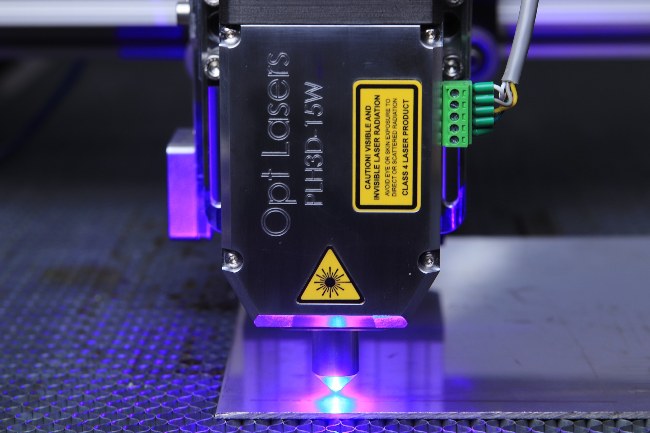Metal engraving is used in a variety of ways including in decorative applications and industrial settings. Laser metal engraving is used in the motor industry, for example, for adding serial numbers and barcodes to automotive parts to discourage theft and aid in recalls in case of safety issues.
Metal cutting and engraving is also commonly used for decorative purposes, for nameplates, plaques, gifts such as jewelry, hip flasks, or other drinking vessels, for business branding and signage. One of the most commonly seen of all engraved metal items is pet, usually dog, identification tags.
Traditionally metal engraving was done by hand using cutting tools called gravers. However, these days laser engraving is not only common for industrial purposes but for more decorative and intricate pieces too.
This article explains what laser metal engraving is, the kinds of metal that can be engraved, why laser engraving is a good choice and explains the steps in the laser metal engraving process.
What Is Laser Metal Engraving?
Laser metal engraving is the removal of specified parts of a piece of metal to create a 3D, indented pattern, picture or piece of text.
A fibre laser of over 50 watts heats the targeted parts of the metal that are to be removed at such a high temperature that it evaporates.
The laser works via computer software which tells the laser the depth of cut required as well as where the laser needs to go.
Types Of Metal For Laser Engraving
Laser metal engraving works well on soft metals such as aluminium, silver, gold, copper and brass. Harder metals and alloys are good materials for engraving too such as steel, stainless steel and titanium.
Benefits Of Laser Metal Engraving
Engraving metal with a laser has many advantages over more traditional hand engravings. Firstly, it is fast. This not only means that you can have your finished engraved metal item/s in your hands sooner, but it also means that it is far cheaper than paying a craftsperson for all the hours that it would take for your text or image to be hand engraved into your metal sheet or item.
There is also no real risk of error when it comes to laser engraving. As long as the correct steps are followed, and the design input into the computer software is correct, the laser will do its job perfectly every time whether it is creating one bespoke piece or a thousand identical engraved items.
Using a laser for metal engraving also ensures clean, crisp lines and 100% accuracy, no matter how complex the design or image.
Steps For Laser Metal Engraving
Preferred Metal Of Choice
The heat and depth settings required will be different according to the type of material you are using. Ensure you choose the correct settings on the laser engraver. Place the item or sheet in the correct position, using a rotary attachment, if required.
Design/Element To Be Engraved
Load the image, design or text into the software and check it is positioned correctly.
Equipment & Safety Measures
Always use the correct PPE such as laser safety glasses and ensure that there is suitable air extraction equipment to remove the fumes created by the evaporation process.
Execution
Where possible, it is always best to do a trial piece to double-check you have the correct settings and the correct position of the item. This is not always possible, and for precious or otherwise valuable items, it is recommended to either get professional advice or get a professional engraving service to engrave the piece for you.
For further advice on metal laser engraving, or to discuss your engraving requirements with our engraving specialists, please get in touch with us here.

